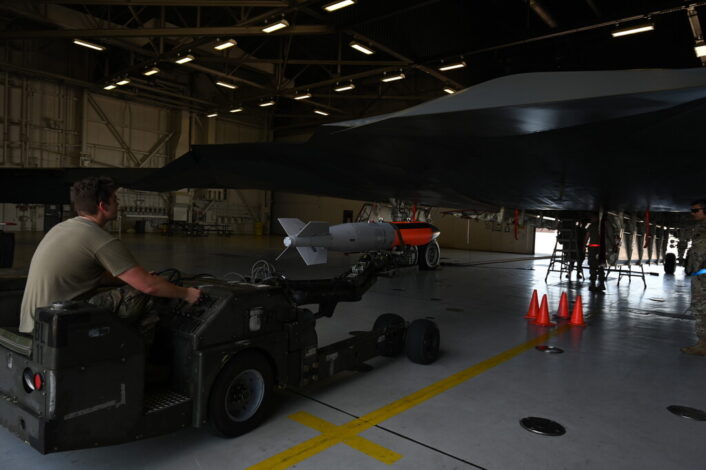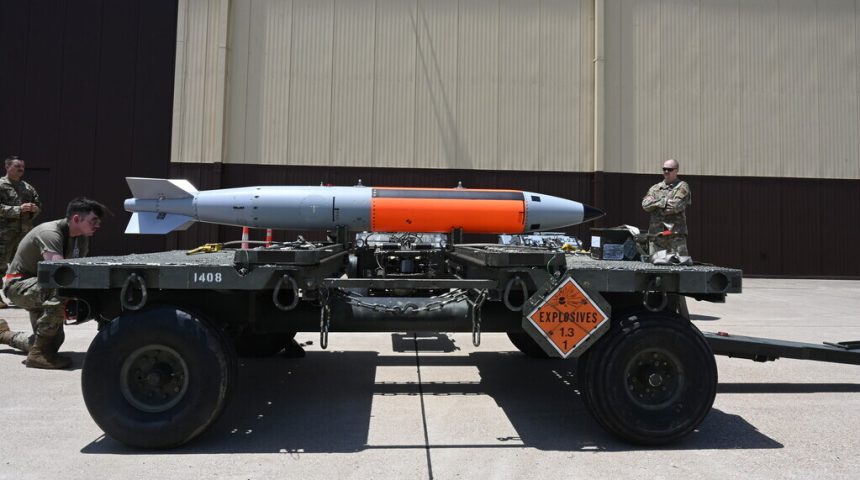The bomb will be made by a B61-7 warhead inside a B61-12 casing, providing another option with a higher yield.
The U.S. Department of Defense announced the development of yet another, more powerful variant of the B61 nuclear bomb, the B61-13. The decision arrived shortly after the B61-12 entered full scale production but, noted the DoD, it will still be dependent on Congressional authorization and appropriation before becoming effective.
“The B61-13 will strengthen deterrence of adversaries and assurance of allies and partners by providing the President with additional options against certain harder and large-area military targets”, said the press statement. Shortly thereafter, the document is quick to clarify “the fielding of the B61-13 is not in response to any specific current event; it reflects an ongoing assessment of a changing security environment”.
In fact, the 2022 Nuclear Posture Review observed that U.S. competitors continue to expand, diversify, and modernize their nuclear forces while increasing reliance on nuclear weapons. Because of this, it was decided to adopt a balanced approach to the security environment, investing in deterrence while renewing a commitment to pursue arms control and other risk reduction measures.
According to the DoD, the number of the nuclear bombs in the inventory will not change following this decision, as the B61-13 will replace some of the B61-7s in the current stockpile and the number of B61-12s to be produced will be lowered by the same amount as the number of B61-13s produced. The B61-13 will have a yield similar to the B61-7 (reportedly 340-360 kt), reusing its warhead, and will include the modern safety, security, and accuracy features of the B61-12.
As we already reported, the B61 entered service 50 years ago and has undergone a Life-Extension Program (LEP) to consolidate and replace four legacy bomb variants, the B61 -3, -4, -7, and -11 mods, into the B61-12. The refurbished B61-12 will allow the retirement of the larger B83, becoming the only remaining gravity delivered nuke in the inventory. The bomb will carry a low-yield nuclear warhead with four yield options, reportedly 0.3 kilotons, 1.5 kilotons, 10 kilotons and 50 kilotons, instead of larger warheads like the models it is replacing (which can reach 400 kilotons depending on the variants).

The 12-foot, 825-pound bomb is designed to be delivered from the air in either ballistic or guided-gravity drop modes, thanks to a new Boeing-built tail assembly that includes an Inertial Navigation System (INS) precision-guidance package and two spin rocket motors that improve the bomb’s stability on its longitudinal axis during the descent. The LEP is said to be increasing the B61’s accuracy so much (with a reported 30 m Circular Error Probability instead of the original 100 m) that it will have the same capability against hardened targets as the much more powerful weapons it is replacing.
Similar to the B61-12, the B61-13 will likely also have limited earth-penetration capabilities and lower yield options. Due to the phenomenon of ground-shock coupling, according to the Federation of American Scientists, the B61-13’s relatively high yield and accuracy will likely enable the bomb to strike underground targets with yields equivalent to a surface-burst weapon of more than one megaton. The effects of a 360-kiloton explosion are significantly greater than those that would result from a 50-kiloton explosion of the B61-12 and, if detonated on the surface, a yield of 360 kilotons would cause significant radioactive fallout over large areas.
Like the B61-7, the B61-13 will be designed for delivery by strategic bombers such as the new B-21 Raider and possibly the B-2 Spirit, reports the FAS, and it is not intended for delivery by dual-capable fighters such the F-35 Lightning II. Because of this, all of the B61-13s will be stored within the United States, unlike the B61-12s of which a portion will be forward-deployed to Europe. The new bomb is also expected to allow the retirement of the last US megaton bomb, the B83-1.









